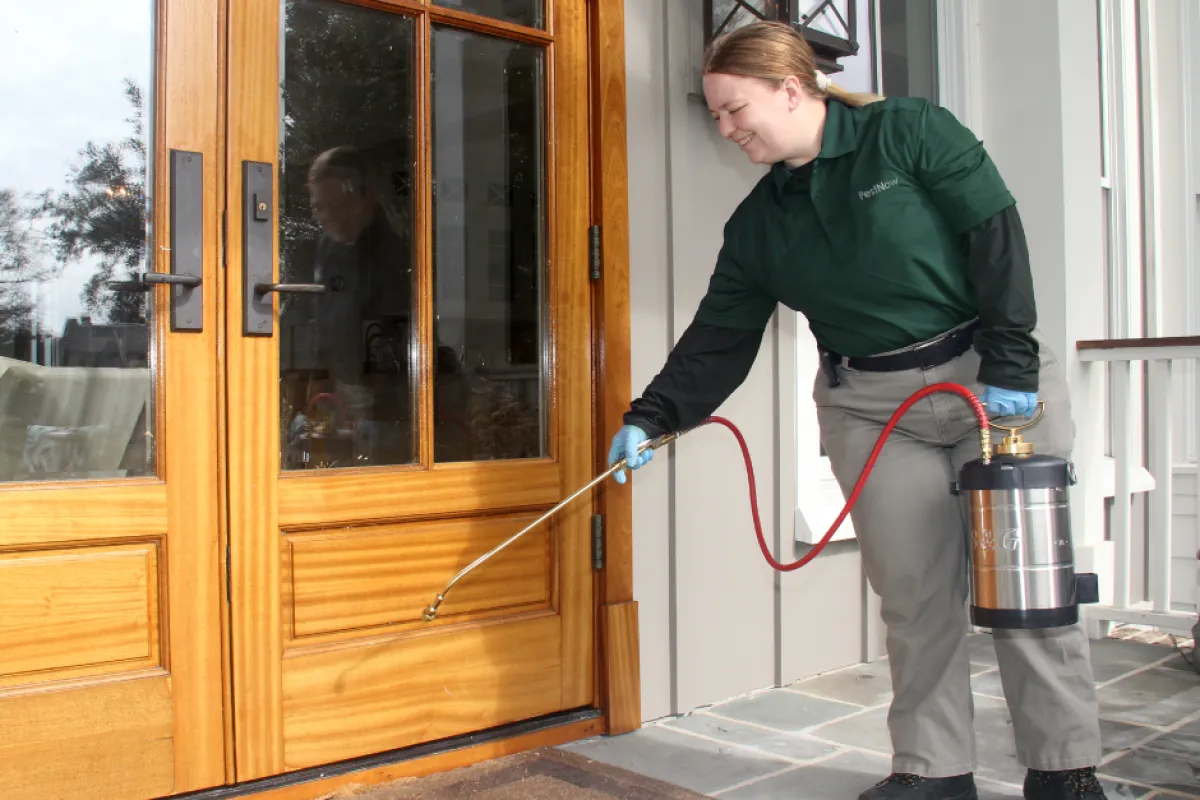Bed Insect Treatment Breakdown: Comparing Chemical Vs. Non-Chemical Solutions
In the world of parasite control, particularly when handling the relentless issue of bed pests, the choice in between chemical and non-chemical therapy services can be a crucial one. Both strategies offer distinct advantages and drawbacks, affecting factors such as efficiency, safety considerations, and total price. By checking out the nuanced information of each approach, a more clear understanding of which path to pursue in dealing with a bed pest problem can be obtained.
Effectiveness of Chemical Treatments
Chemical treatments for bed bug problems have actually been commonly acknowledged for their potent and rapid effectiveness in getting rid of these bugs. When taking into consideration the efficiency of chemical therapies, it is essential to understand that they can give a fast and comprehensive solution to a bed bug problem. Expert pest control operators commonly count on insecticides to target bed pests at different phases of their life cycle, including nymphs, adults, and eggs. These chemicals commonly function by interfering with the bed pests' nerves, leading to paralysis and ultimate fatality.
In addition, chemical treatments have the advantage of providing residual impacts, implying that they can proceed to get rid of bed pests also after the initial application. This residual activity is particularly valuable in combating any type of possible re-infestations. Additionally, the quick action of chemical treatments can bring alleviation to individuals dealing with extreme bed pest problems, permitting them to gain back control of their home quickly.
Safety Issues With Chemical Solutions
One essential aspect that calls for cautious factor to consider when making use of chemical solutions for bed pest treatment is making sure the safety of passengers and the atmosphere. Exposure to particular chemicals used in bed insect therapies can lead to respiratory concerns, skin irritation, or other unfavorable responses, particularly in individuals with pre-existing conditions or sensitivities.
In addition, the ecological impact of chemical solutions is an additional substantial factor to consider. Some pesticides made use of in bed insect treatments might be damaging to advantageous insects, wild animals, and communities if they seep right into the dirt or water systems. It is crucial to utilize chemical treatments judiciously, adhering to safety and security standards, and taking into consideration less poisonous alternatives to minimize these threats and guarantee the reliable and secure monitoring of bed insect problems.
Advantages of Non-Chemical Techniques
Thinking about the prospective security concerns and environmental influence associated with chemical remedies for bed pest therapy, checking out non-chemical approaches presents an encouraging alternative with several unique benefits. Non-chemical treatments are environmentally pleasant, as they do not add to air or water contamination, making them a lasting selection for parasite control.
Furthermore, non-chemical options can be reliable in targeting bed insects, including hard-to-reach areas where chemical treatments might not penetrate - A1 pest control charlotte nc bed bugs. Techniques such as warm treatment, vacuuming, heavy steam cleansing, and cushion coverings give thorough elimination without the use of damaging chemicals.
Limitations of Non-Chemical Treatments

Furthermore, non-chemical treatments usually need multiple applications to attain successful removal. This can be lengthy and might not constantly ensure complete elimination of all bed bugs and their eggs, especially in hidden or hard-to-reach areas.
In addition, the success of non-chemical therapies greatly relies on proper execution and thoroughness, which can be challenging for individuals without professional knowledge. Inadequate application of non-chemical methods might result in insufficient eradication, leading to relentless problems and the requirement for added treatments.
Therefore, while non-chemical treatments have their benefits, it is important to recognize these limitations and consider them when determining one of the most efficient technique for handling bed pest infestations.
Expense Comparison: Chemical Vs. Non-Chemical Options
Offered the constraints associated with non-chemical treatments, an important facet to review in the context of bed pest monitoring is the price comparison in between chemical and non-chemical choices. Chemical treatments generally include the application of insecticides by specialists, which can range from $250 to $900 per room, relying on the intensity of the invasion and the size of the area to be treated. In contrast, non-chemical treatments like heat treatment or heavy steam can be extra pricey, with prices varying from $1,000 to $6,000 for a whole home. While the preliminary cost of read chemical treatments may appear lower, multiple treatments may be called for to completely get rid of the infestation, possibly boosting the overall expense. On the various other hand, non-chemical alternatives might supply a more lasting and eco-friendly option, although they can be cost-prohibitive for some people. Eventually, when thinking about the cost of bed insect therapy options, it is necessary to consider the ahead of time expenses against the performance and lasting sustainability of the chosen approach.
Conclusion

Considering the prospective safety issues and environmental impact associated with chemical options for bed bug treatment, exploring non-chemical approaches offers an appealing option with several unique benefits.Offered the limitations linked with non-chemical treatments, an essential aspect to examine in the context of bed insect monitoring is the price comparison in between chemical and non-chemical choices. In comparison, non-chemical therapies like heat therapy or steam can be a lot more expensive, with costs varying from $1,000 to $6,000 for a whole home. While the cal pest control preliminary cost of chemical therapies may appear lower, numerous therapies may be needed to completely eradicate the invasion, possibly enhancing the overall cost.In conclusion, when contrasting chemical and non-chemical bed bug therapy options, it is vital to think about efficiency, safety and security, advantages, limitations, and expense.
Comments on “Experienced A1 Exterminators Charlotte NC - Rapid and Reputable Solutions”